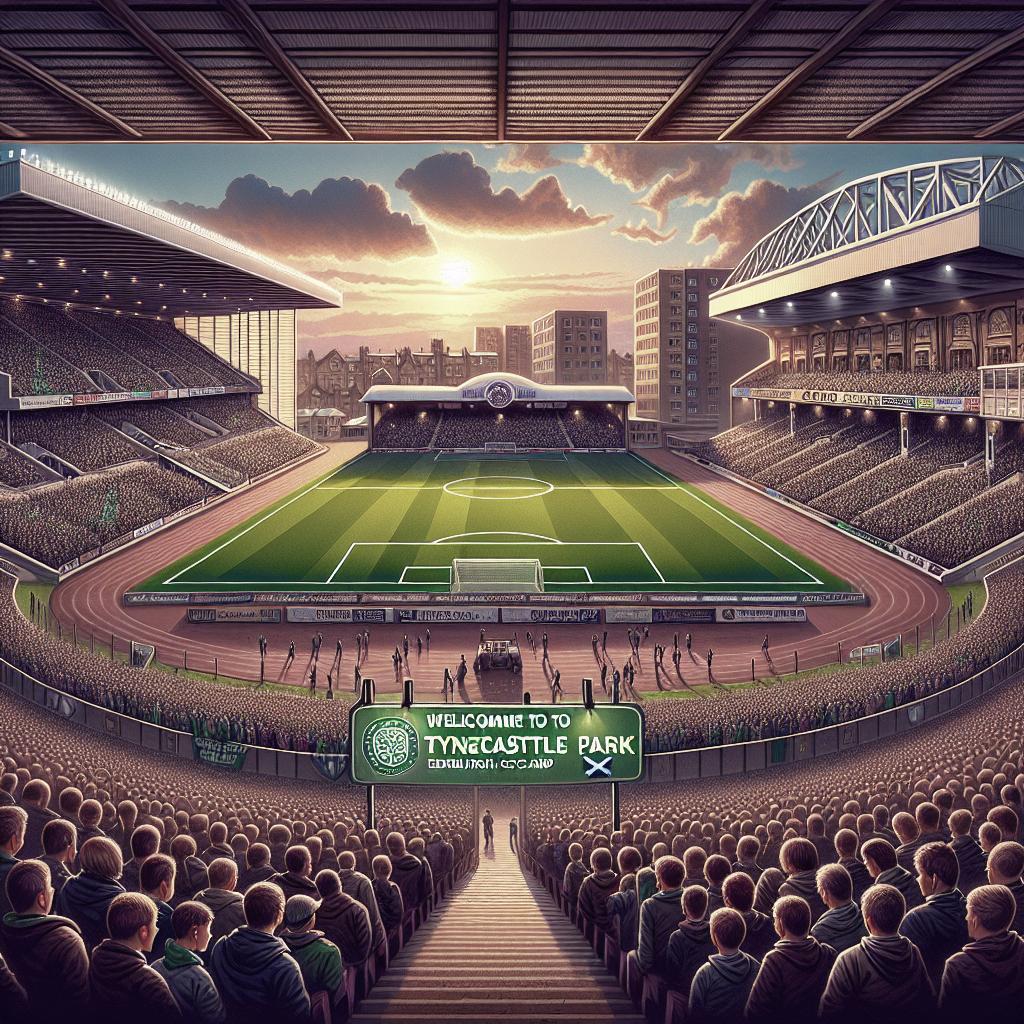« `html
Tynecastle Park is more than just a stadium; it is a cornerstone of Edinburgh’s sporting culture and history. Located in the Gorgie area, this historic football ground has been the proud home of Heart of Midlothian Football Club since the late 19th century. Over the years, it has evolved with the times, offering fans a thrilling experience. This blog post will delve into the incredible legacy and innovative advancements of Tynecastle Park, along with its architectural marvels and community impact. We’ll explore the dynamic atmosphere inside the stadium on match days and see how it continually shapes the identity of both the club and the local community. Join us as we take an in-depth journey through the heart of Scottish football tradition and modern innovation. Lessons learned from this iconic stadium’s story will resonate with sports fans and history enthusiasts alike.
The Origins and Historical Significance of Tynecastle Park
Tynecastle Park’s story begins in 1886 when Heart of Midlothian Football Club, already established in 1874, decided to find a permanent home matching its ambitions. The selection of the Gorgie area for the stadium laid the foundations for a long-lasting relationship between the club and the local community. Over the years, Tynecastle has witnessed countless historic moments that have shaped both the club’s legacy and Scottish football. From hosting legendary matches to serving as the backdrop for exceptional plays, Tynecastle Park has entrenched itself in the annals of sports history.
The stadium has undergone numerous renovations to maintain its status as a key sports venue. Each transformation mirrors the changing landscape of football, blending tradition with modernity. In the early 20th century, Tynecastle Park saw its first major upgrade, solidifying its structure to accommodate an ever-growing fan base. This continuity of evolution has ensured that Tynecastle Park remains not just a piece of the past, but a vibrant part of the present, anchoring its historical significance while embracing the future.
Architectural Evolution and Modern Features
Tynecastle Park is a testament to the evolution of architectural design in sports venues. The transition from its initial construction to its current state highlights a meticulous blend of historical preservation and contemporary innovation. Early designs focused on utilitarian stands, which soon evolved into more sophisticated structures featuring state-of-the-art amenities and increased seating capacity. This transformation illustrates the stadium’s ability to adapt to the demands of an ever-evolving football industry, ensuring fan comfort and enhanced viewing experiences.
In recent years, Tynecastle Park has undergone significant upgrades, including the redevelopment of the Main Stand. This modern facility not only increases capacity but also incorporates advanced technological features, improving the overall spectator experience. Today’s Tynecastle Park is equipped with high-tech facilities that include expansive hospitality areas, improved acoustics, and cutting-edge lighting solutions, all of which contribute to a more immersive and enjoyable match day atmosphere.
The Match Day Experience: Atmosphere and Engagement
The match day experience at Tynecastle Park is renowned for its electrifying atmosphere, where the passion of the fans meets the thrill of the game. The stadium’s design ensures that spectators are close to the action, making them an integral part of the on-field dynamics. This proximity fosters a vibrant environment where the collective energy of thousands of fans elevates the players’ performances. The engagement extends beyond the final whistle, as fans partake in celebrations, discussions, and camaraderie, enriching the community spirit.
Interactive experiences before and during matches have become a staple of Tynecastle’s offerings. From fan zones equipped with entertainment and food stalls to pre-match events featuring club legends, the engagement opportunities add value to the entire match day journey. These activities not only enhance the fan experience but also reinforce the connection between the club and its supporters, anchoring Tynecastle Park as a dynamic hub for football enthusiasts.
Community Impact and Engagement
Tynecastle Park plays a pivotal role beyond being a football stadium; it acts as a community catalyst fostering social cohesion and development. The relationship between Heart of Midlothian and the local community is strong, with numerous programs and initiatives aimed at promoting health, education, and social inclusion. The stadium’s facilities often double as venues for community events, workshops, and charity activities, broadening its function and influence within Gorgie and Edinburgh.
The club’s commitment to community engagement is evident in programs that cater to a wide audience, including local youth, seniors, and marginalized groups. These programs not only bring immediate benefits but also build long-term relationships and create opportunities for personal growth and development. The club and community’s synergy is embodied in Tynecastle Park, which stands as a landmark of social responsibility and collective effort, fostering pride and a sense of belonging.
Lessons Learned from the Tynecastle Journey
Tynecastle Park offers valuable lessons in balancing tradition with innovation. Its ability to maintain historical significance while embracing modern amenities stands as a testament to the importance of adaptive change in preserving cultural heritage. The stadium’s evolution highlights how sports venues can continue to captivate and provide value to both spectators and the community by integrating new technologies and fostering community relationships.
Moreover, Tynecastle Park exemplifies the profound impact sports infrastructures can have on local communities. By bridging the past and present, and by fostering engagement through dynamic experiences and community-centered initiatives, it sets a blueprint for similar arenas worldwide. The dual focus on delivering a world-class sports atmosphere while nurturing societal bonds reflects the dynamic role modern stadiums play in cultural identity and community enhancement.
| Section | Summary |
|---|---|
| History | Explored Tynecastle Park’s origins, historical moments, and ongoing renovations. |
| Architecture | Discussed the stadium’s architectural evolution, modern features, and design enhancements. |
| Match Day Experience | Examined the atmosphere, fan engagement, and immersive experiences offered. |
| Community Impact | Highlighted the stadium’s role in fostering social cohesion and hosting community initiatives. |
| Lessons Learned | Reflected on the integration of tradition and innovation, and the stadium’s influence on community identity. |
« `
